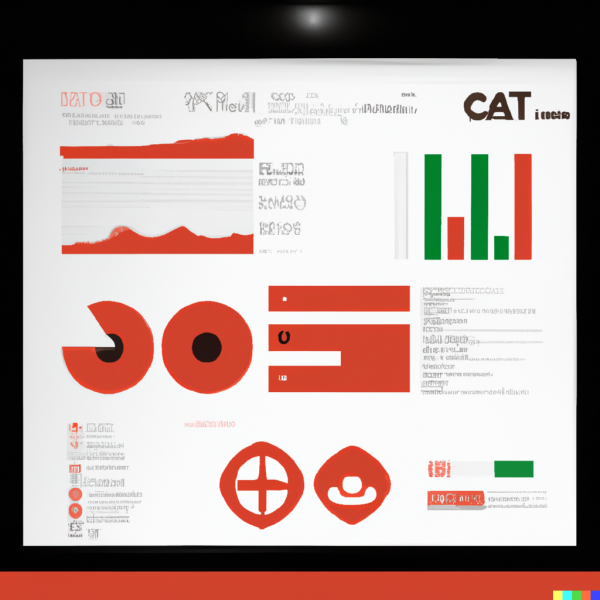Back in the winter of 2005, Jason Kolb (my cofounder and CTO of Latigent) and I penned an article for Business Management magazine titled BI with an IQ. In it, we paint the picture of a utopian contact center in which systems are fully integrated and intelligently automated. At the time, Latigent was the leading Business Intelligence provider for call centers, and we were focused on leveraging emerging technology to move that value proposition forward. Cisco acquired the company in 2007 before we fully delivered on the vision, but recent developments in the market make now the perfect time to implement.
Rewind it Back
Let's take a look back to 2005 when "Web 2.0" technologies were first emerging. Back then, Artificial Intelligence, APIs, Robotic Process Automation (RPA), and even "Big Data" weren't things yet.
The topics de jour were web services, service orientated architectures (SOA), Computer Telephony Integration (CTI), SIP was coming of age, and analytics for the sake of analytics.
While eclipsed now, these were important building blocks that enabled both data extraction from siloed systems as well as two-way interfaces that allowed some level of control from external applications.
The problem? We were ahead of our time. Most call center applications (ACD, WFM, CRM, etc.) were still closed-off and proprietary systems with the goal of creating vendor lock-in.
Contact Center Automation - An Opportunity Revisited
Building on the notion established in 2005, the ability to eliminate repetitive tasks and create an intelligently automated operation is more relevant now than ever.
I think Jason and I laid out the opportunity pretty well back then, so I'll quote the original article with a few annotations in square brackets to put it in context for Xaqt in 2020:
You’ve read them all: the articles and case studies about business intelligence successes and failures, the ROIs and the budget overruns, the promise of corporate performance management (CPM) and, of course, the ‘balanced scorecard’. Perhaps you’ve even gone through the process of deploying your own enterprise business intelligence solution; you’ve consolidated your data, identified key metrics, built your performance dashboards and even generated ‘one version of the truth’ reports for all your managers. So now you’re probably asking yourself: what’s next?
The answer lies in the new generation of BI applications that are now arriving. These tools will finally enable your BI software to actually be intelligent, which means these solutions will not only report on key data elements, but act on them by automating and executing key decisions throughout your enterprise.
TODAYS’ BI SOLUTIONS [“today” was 2005, but little has changed]
Today’s business intelligence solutions [cognitive insights] collect data from disparate data sources across your enterprise – ACDs, CRM applications, workforce management software, order management systems, etc. each holding a key piece of data making up the information you need to run your business efficiently. A typical BI deployment usually consolidates information into a data warehouse or data mart, aggregates and then reports back to managers via dashboards, real-time alerts and often some flavor of OLAP analysis [OLAP has since between replaced with a multitude of database options purpose built for analytics]. There are also drill-down reports that promise to let your managers slice and dice their data anyway they choose.
In summary, BI products report on predefined metrics and alert managers when key performance indicators fall below certain thresholds or when critical events take place, thus allowing managers to evaluate the information and take the appropriate action.
Let’s use a stereotypical call center as an example. A manager may receive an alert stating that call volume is over forecast today and calls are backed-up in queue; that sales conversion is below goal; or even that your call monitoring application is flagging a call that needs a manager’s review.
Your manager may decide to recruit staff to handle the additional call volume, coach specific agents on sales skills to increase conversion, and so on. All of these actions are reactionary to a problem that is already occurring. They involve alerting, evaluating the data, making a decision and then taking the appropriate action. The longer this process takes, the more it costs in lost revenue, overpaid labor and decreased customer satisfaction.
Additionally, there is no guarantee that the decisions made or actions taken will align with your company’s objectives or bottom line. For example, did the manager evaluate the overtime that will be incurred by recruiting the additional agents compared to the revenue being lost by not answering the calls? Or did customer satisfaction scores suffer because no action was taken at all? In other words, did your manager end up costing your business more, all the while thinking they were doing the right thing?
Introducing the Intelligent Ecosystem
So let’s say that your BI application, instead of reporting on a problem after the fact, now identifies that there is going to be a problem and directs your other technology systems on how to fix it. This means instead of getting an alert that says your service level is below goal, you receive a message that says your service level was going to be below objective – however, corrective action was taken and the projected impact will meet the target.
With the advent of web services [APIs], XML [JSON] and the growing popularity of computer telephony integration (CTI) [less relevant today], you can now expand your BI solution to act as a middle communication device for your other technology platforms [today this we decouple the frontend dashboard engine from the enterprise data lake and robotic process automation rules]. This will enable you to take the disparate applications across your enterprise and create an ecosystem. Your business intelligence server will sit in the middle and act as the ‘King of the Jungle.’ [Cognitive Automation]
Now let’s go back to our stereotypical call center and create an intelligent ecosystem with your IVR [Xaqt's Cognitive Voice Automation Suite], workforce management tool (WFM) [Xaqt's Equinox Optimization tools] and ACD [Cloud based contact center].
In the previous scenario, your manager received an alert notifying him/her that service levels for the day were below goal. In your new intelligent ecosystem, we can program your BI software [business process automation and decision support platform] to identify when service levels will fall below objectives. It then follows your prewritten business rules and goes out to your WFM application to ‘ask’ a more detailed series of questions: Is call volume over forecast? Is absenteeism higher than normal? What agents are available to come in for extra hours today without going into overtime? [The RPA engine no longer needs to "ask" these types of questions because the context server already knows the state of each connected application and has visibility into all the data-points].
Based on the answers to these questions, it then ‘tells’ your IVR [CVA] to call these agents and solicit extra hours. The agent simply replies over the telephone and the information is reported back to your BI application [this can now be done via SMS instead of an outbound call], which updates your WFM software, directs it to rerun the forecast and retrieves the new projected service level. All of this occurs in minutes, not hours. [and doesn't require human intervention]
The message that your call center manager receives now tells them what their current service level is, the reasons why it is below goal, which agents are coming in for extra hours and at what time, how much additional labor it will cost you, and what the projected impact will be.
Not ready to completely turn over the keys to a machine? No worries, an alternative is to embed decision options for your managers right next to key performance indicators in a report. So once they’ve identified an issue, they are presented with options consistent with your business rules and objectives [a recommendation engine built with machine learning on massive amounts of data]. From inside a report or dashboard, the manager will simply select which action they want to take and hit the button. Your BI tool then does the rest.
The opportunities and scenarios that this technology will be implemented in are innumerable. However the bottom line impacts will all be the same: more consistent decisions and quicker actions taken across your business will drive higher profitability.
Back to the Future
Welcome back to 2020, where Artificial Intelligence and Robotic Process Automation is now a real thing.
Since founding Xaqt, I've adopted the thesis that "Dashboards are where good data goes to die". The real value in business intelligence solutions, is the intelligence and taking action on the insights.
And, after a 15 year hiatus, the original Latigent vision is seeing its day and yielding measurable results for Xaqt customers. Next-up, I'll layout why now is the right time, and how Cognitive Automation is going to transform every aspect of your call center operations, enterprise, and customer experience.




